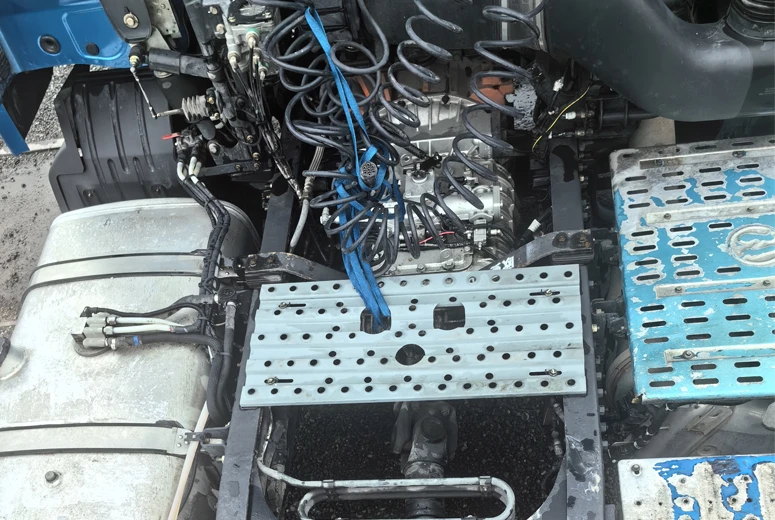chassis and body of automobile
The Chassis and Body of an Automobile A Comprehensive Overview
The automobile, a marvel of modern engineering, is composed of many critical components that work in harmony to ensure functionality, safety, and comfort. Among these components, the chassis and body hold paramount importance as they form the structure upon which the vehicle operates and interacts with the environment. Understanding the roles of the chassis and body can provide insights into not just engineering principles, but also the evolution of automotive design and safety features.
The Chassis The Foundation of the Automobile
The chassis is often referred to as the backbone of the vehicle. It is the framework that supports the engine, transmission, suspension, and other critical components. Typically made from high-strength steel, aluminum, or composite materials, the chassis must withstand various forces while providing stability and rigidity.
One of the primary functions of the chassis is to absorb and distribute loads from the vehicle’s weight and its passengers. It connects the wheels and suspension system, allowing the vehicle to maintain traction and stability during motion. Modern chassis designs, particularly those utilizing unibody construction, integrate the body and chassis into a single structure, greatly enhancing strength and reducing weight.
Furthermore, the chassis plays a pivotal role in the vehicle's safety. Crumple zones, strategically designed areas of the chassis, are engineered to deform during a collision, absorbing energy and reducing the impact on occupants. Advances in materials science and engineering have led to the development of more resilient chassis that not only protect passengers but also improve overall vehicle performance.
The Body Enclosure and Aesthetic Appeal
While the chassis provides structural integrity, the vehicle's body serves multiple essential functions, including the enclosure of mechanical components, passenger space, and aesthetic appeal. The body of an automobile is constructed from various materials, including steel, aluminum, plastic, and composites, each selected based on factors such as weight, cost, and production methods.
chassis and body of automobile

Automobile bodies come in different styles and designs, from sedans and coupes to SUVs and trucks. Each design has its unique aerodynamic properties, which impact fuel efficiency and handling. For instance, a streamlined body reduces drag and enhances fuel economy whereas a rugged SUV body may prioritize off-road capabilities and passenger space.
In terms of safety, the body also contributes significantly to passenger protection. Features such as reinforced pillars, side impact beams, and energy-absorbing crumple zones are integrated into the design to protect occupants during collisions. The importance of safety ratings, such as those provided by the National Highway Traffic Safety Administration (NHTSA) or the Insurance Institute for Highway Safety (IIHS), often hinges on the effectiveness of the body structure in withstanding crashes.
Innovations in Chassis and Body Design
Recent advancements in technology have significantly influenced the design and manufacturing of chassis and body components. The advent of computer-aided design (CAD) has enabled engineers to create more complex and efficient structures that maximize strength while minimizing weight. Additionally, the use of simulation software allows for rigorous testing of designs under various conditions before physical prototypes are built.
The evolution of materials technology has also led to the increased use of lightweight materials, such as carbon fiber and high-strength plastics, which now play a crucial role in modern automotive manufacturing. These materials not only improve fuel efficiency by reducing vehicle weight but also enhance performance and safety.
Moreover, the rise of electric vehicles (EVs) has prompted new considerations for chassis and body design. With batteries often placed in the floor of the vehicle, manufacturers are rethinking weight distribution and structural integrity to optimize performance and range.
Conclusion
In conclusion, the chassis and body of an automobile are fundamental components that contribute significantly to its performance, safety, and aesthetic appeal. As automotive technology continues to advance, these components will undergo further evolution, driven by the quest for sustainability, efficiency, and enhanced safety features. Understanding the interplay between chassis and body not only highlights their importance in automobile design but also reflects the ongoing innovations that define the future of the automotive industry. As consumers become more knowledgeable, the importance of well-engineered chassis and bodies will continue to shape their choices and preferences in an ever-evolving marketplace.
-
SINOTRUK HOWO 84 Electric Dump Truck for Eco-Friendly Heavy HaulingNewsJul.26,2025
-
The Fast 16-Gear Manual Transmission Assembly for Heavy TrucksNewsJul.25,2025
-
Mercedes Benz Actros 1848 42 Tractor Truck for Sale - Reliable PerformanceNewsJul.24,2025
-
High-Quality Water Pump Assembly for Sinotruk Trucks – Durable & ReliableNewsJul.23,2025
-
Premium Truck Engine Antifreeze Coolant Fluid for Heavy Duty VehiclesNewsJul.22,2025
-
FOTON View G7 Mini Bus: Affordable & Spacious TransportNewsJul.22,2025
Popular products

























